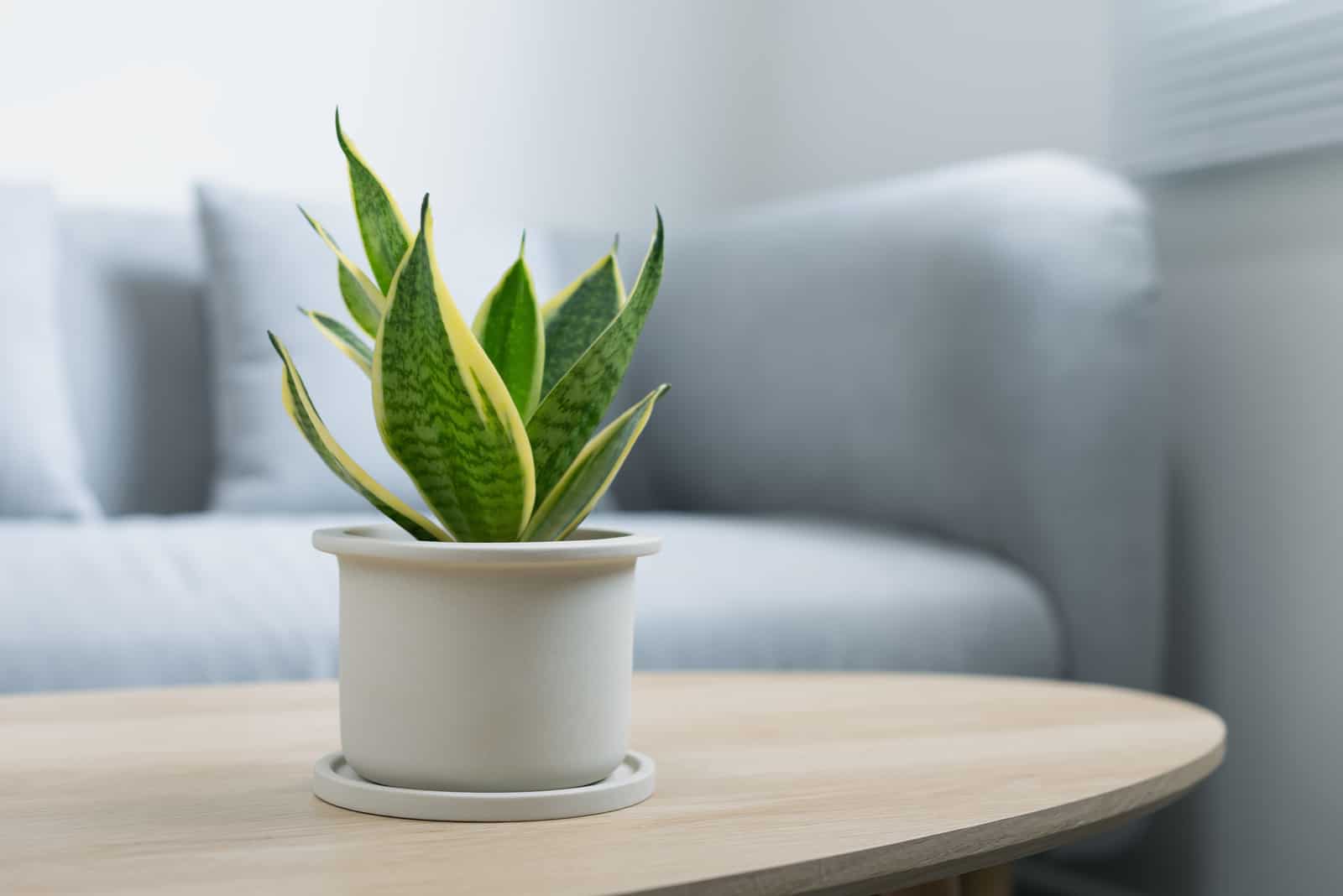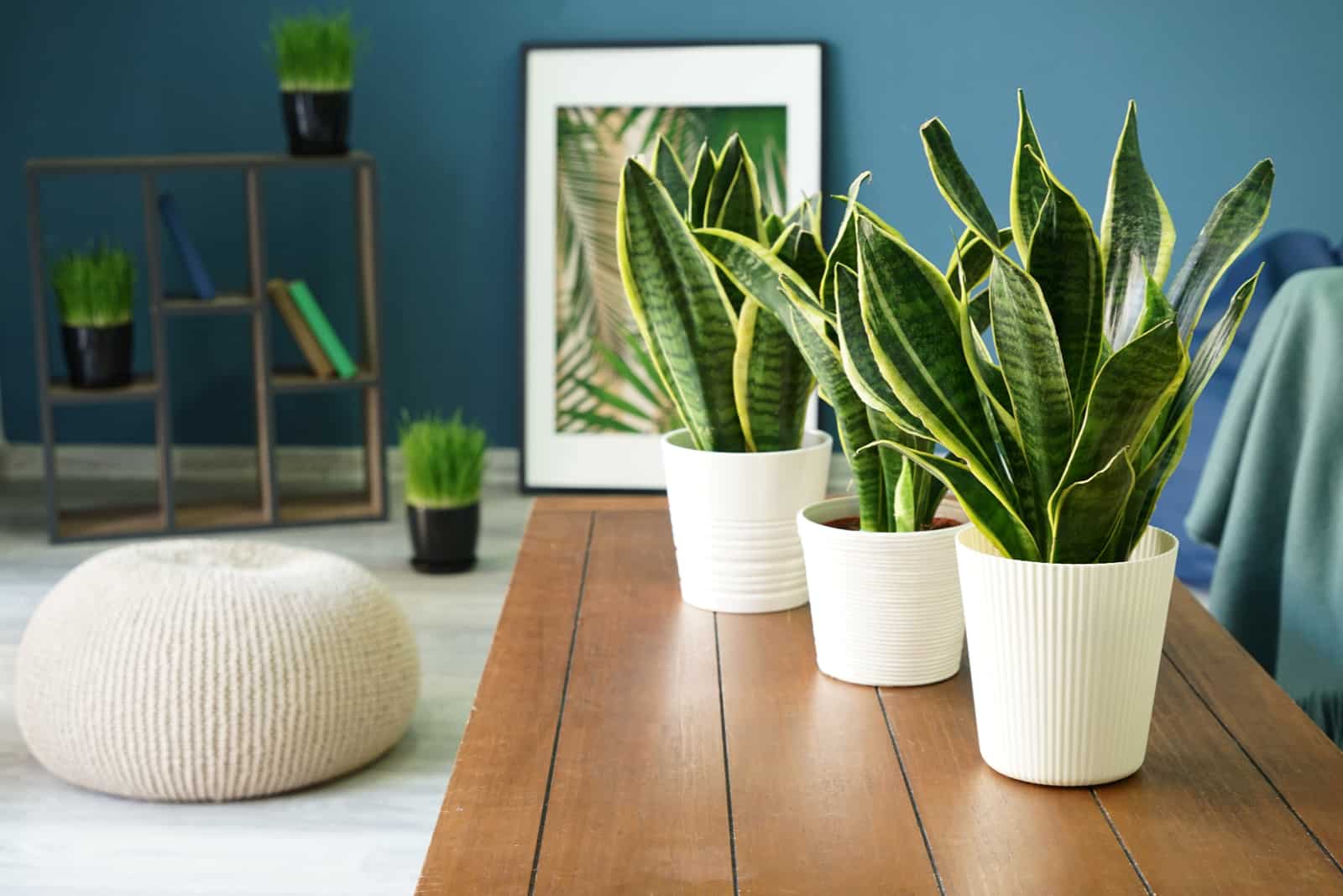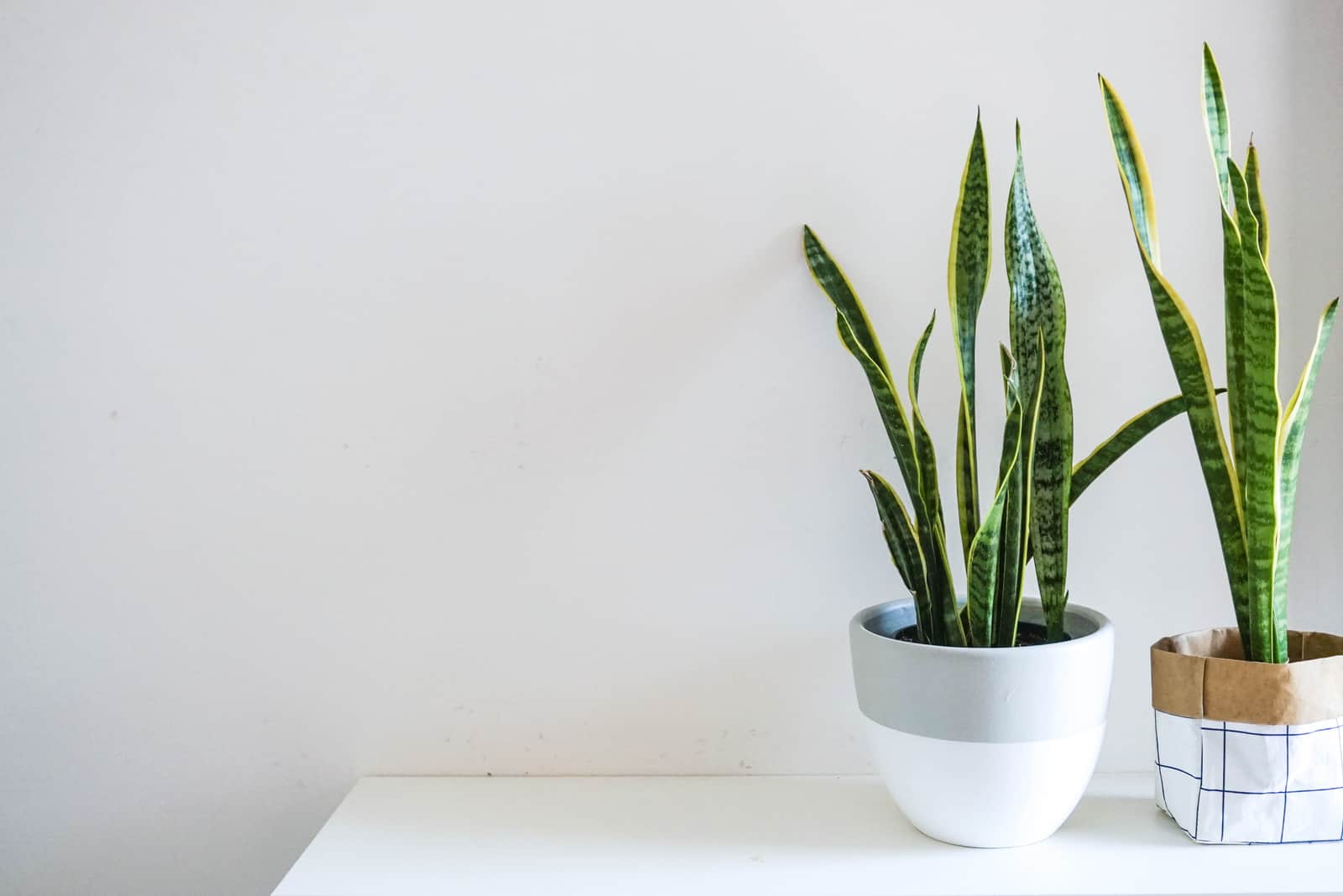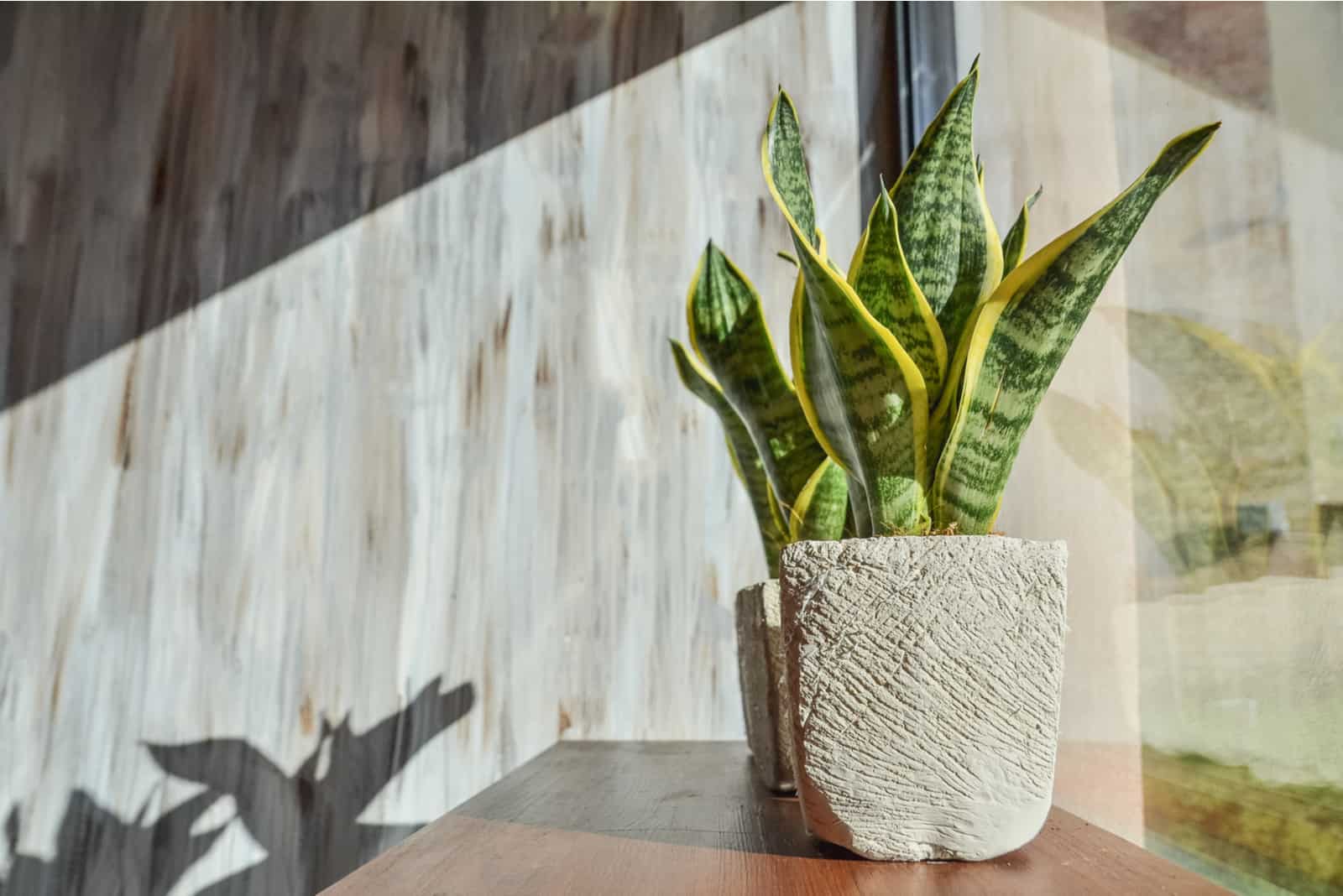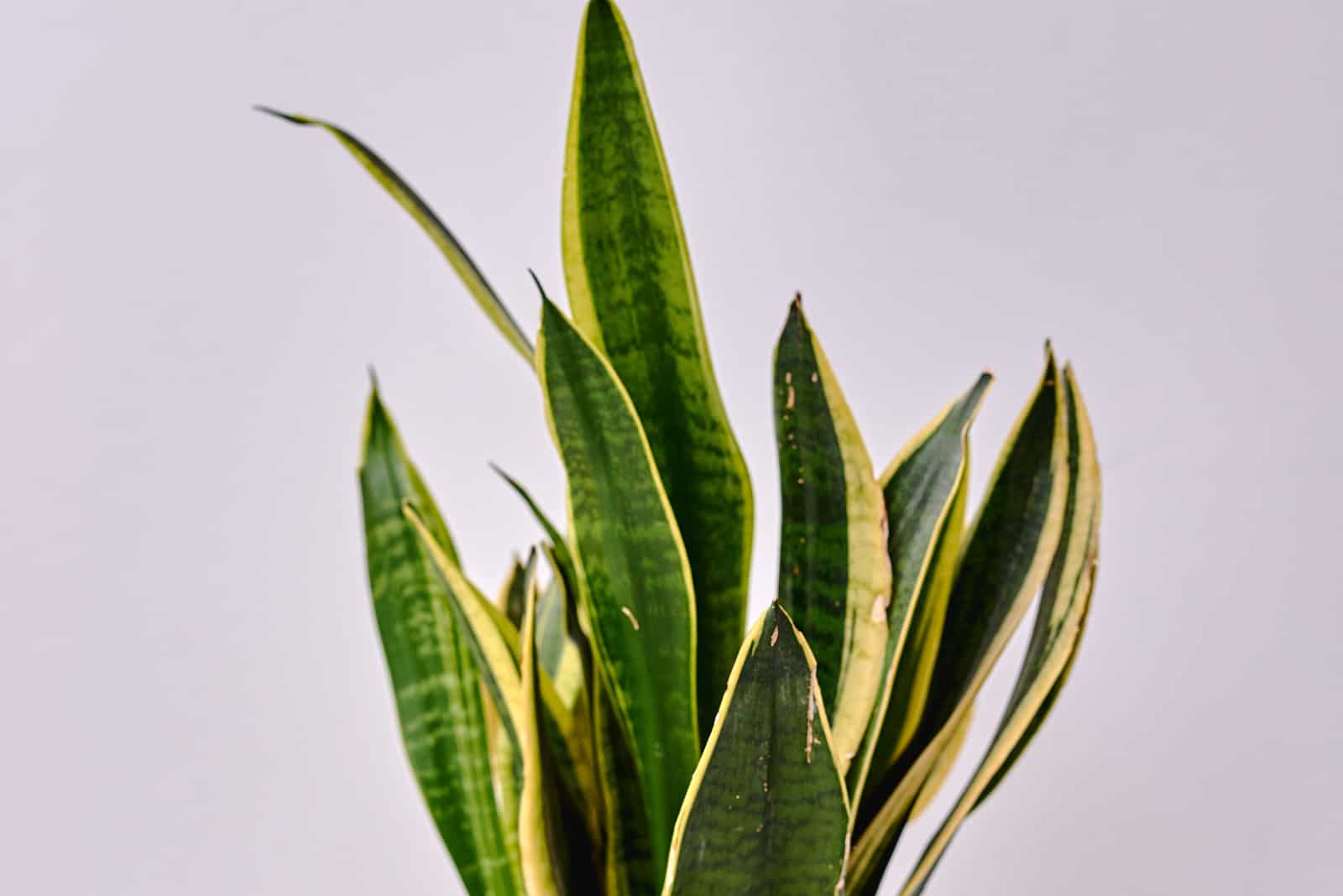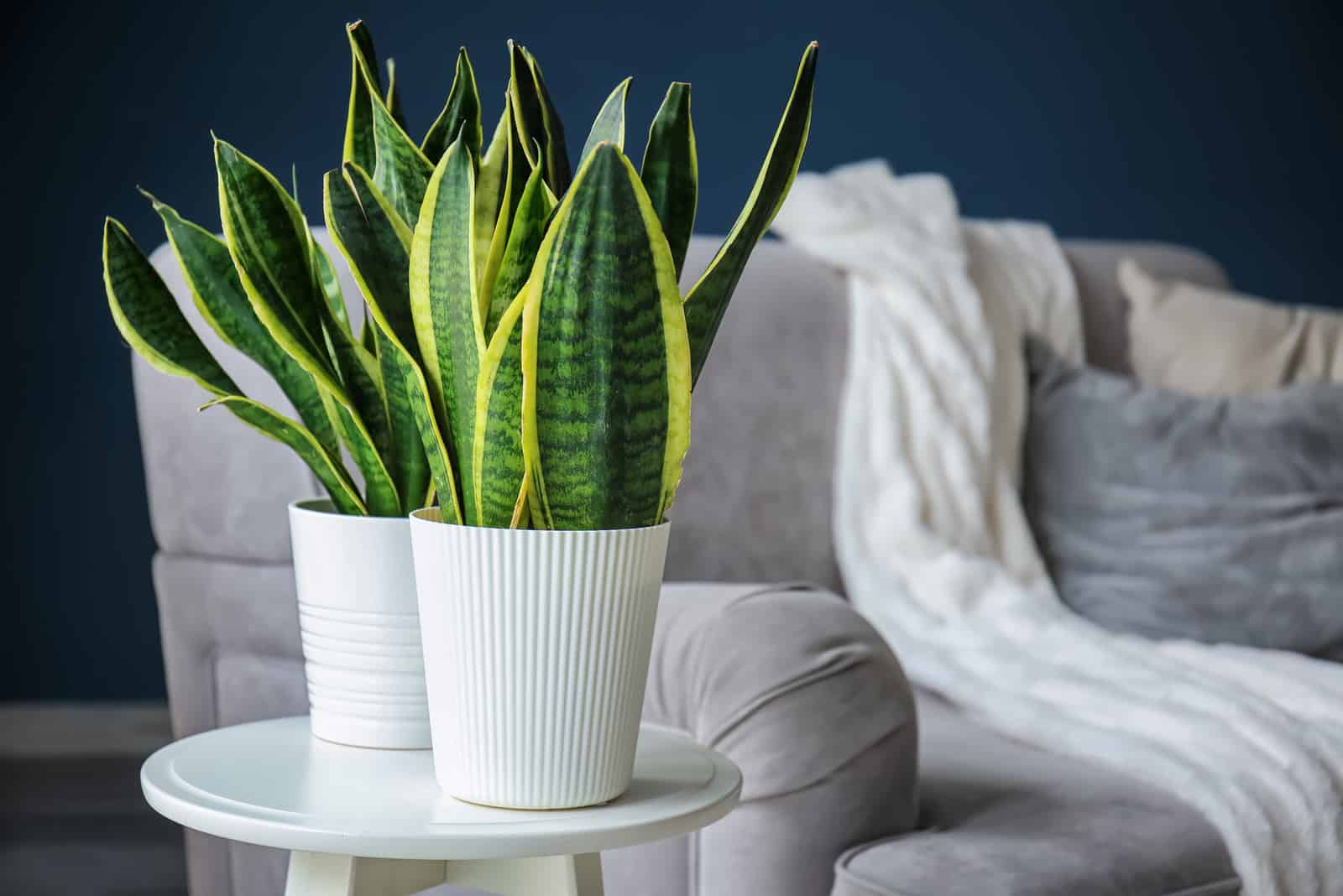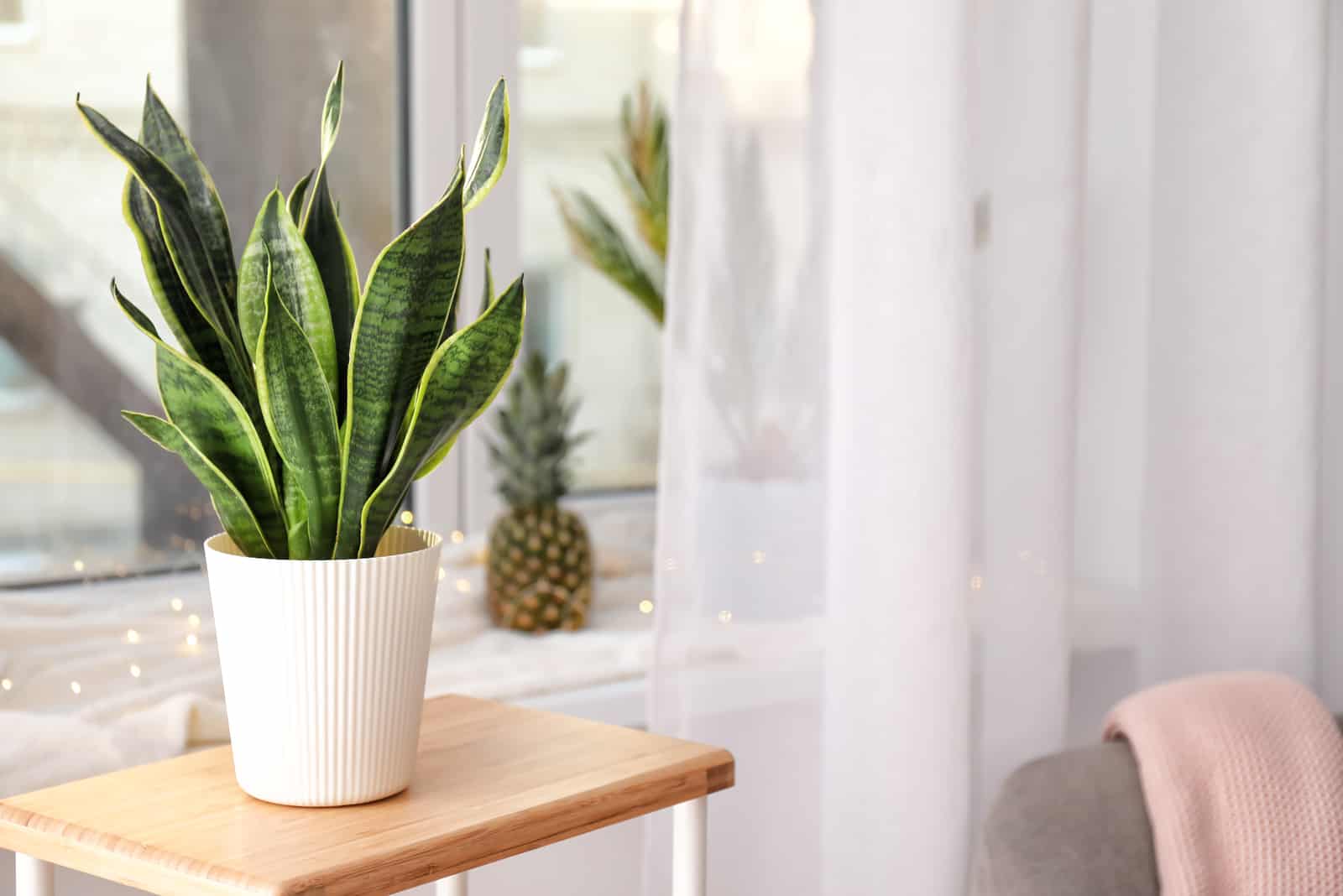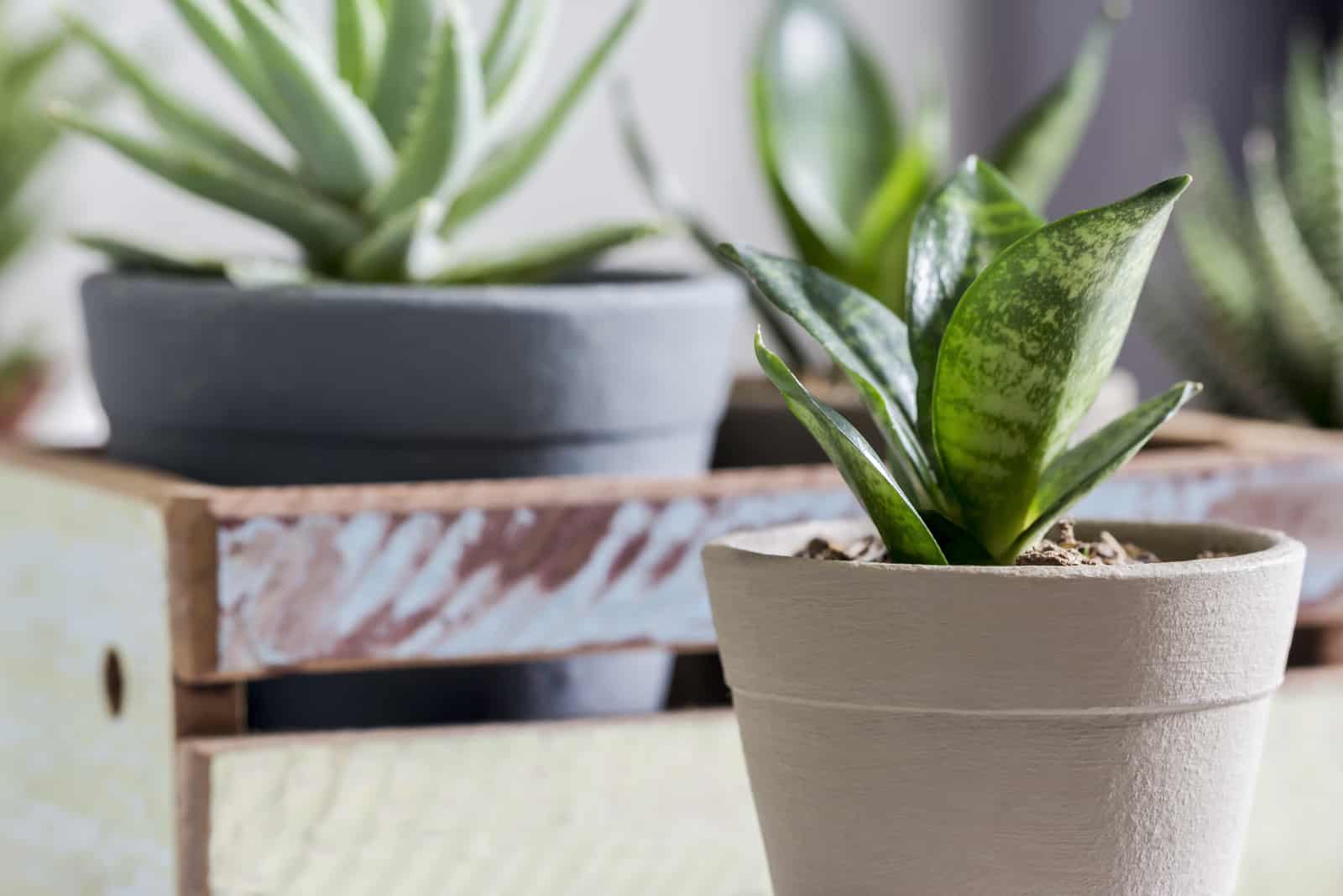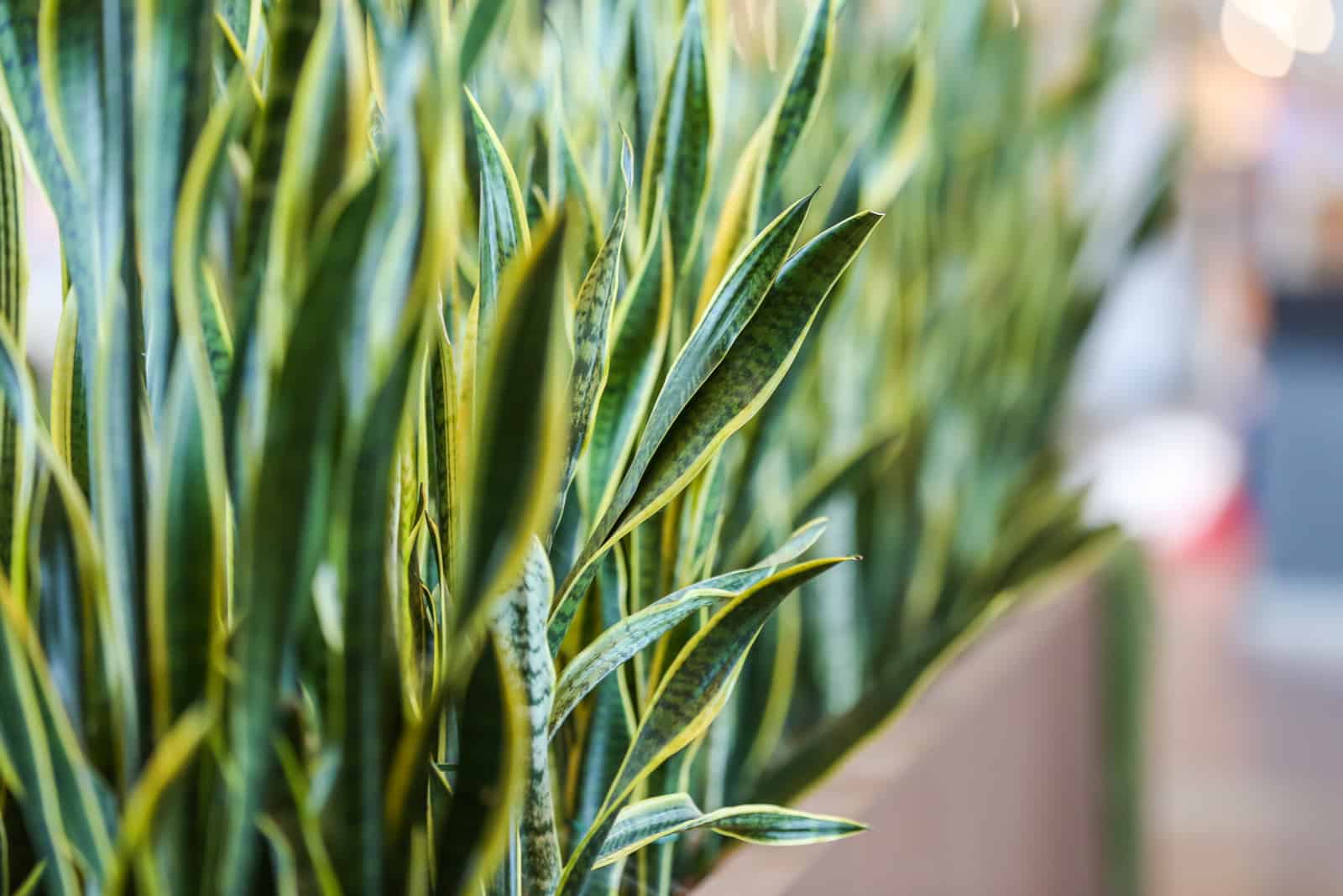If you are looking for a plant that will improve your indoor home decor and make your room look more lively, while improving the air quality at the same time, then you have come to the right place!
Not only are snake plants beautiful and easy to take care of, but they also act as air purifiers by removing bad toxins from the air and replacing them with oxygen!
Keep reading to learn more about snake plant oxygen providers!
Snake Plant Oxygen Provider: The Science
Let’s discuss what toxins can be removed from the air by this unique houseplant. The Snake plant, otherwise known as Mother-in-law’s tongue or Sansevieria trifasciata, is an evergreen perennial plant that produces gorgeous, sword-like leaves that will look good in any corner of your room.
These plants are also low-maintenance and considered to be rare plants that can grow in low light conditions perfectly well. However, there is another great reason why you should get this plant for your home.
According to NASA’s clean air study, this indoor plant can remove air pollutants and improve air quality. It is one of the best houseplants for absorbing airborne pollutants, such as formaldehyde, nitrogen oxide, benzene, toluene, xylene, and trichloroethylene.
It converts a lot of CO2 (carbon dioxide) to O2 (oxygen) at night, so it’s perfect to have several in one room. If there is no airflow, each individual needs 6–8 waist-high plants to survive. NASA claims that it would take between 10 and 1,000 plants per square foot of floor space, according to their estimations, to compete with the air-cleaning abilities of a few open windows or a building’s air handling system.
Paints, printing inks, adhesives, dyes, and varnishes frequently include trichloroethylene, which can irritate the respiratory tract and result in headaches and nausea.
When we breathe out carbon dioxide, it can accumulate in confined areas like offices and classrooms. High levels of carbon dioxide in the air can impair our ability to learn and absorb information, as well as increase tiredness and nausea. However, the snake plant can efficiently absorb CO2 from the air, which is very advantageous for our health.
Gasoline, paints, plastics, and cosmetics all contain toluene. It has been established that toluene can impact our neurological system and mental health, leading to a variety of irregularities and dysfunctions. Children whose moms were exposed to excessive levels of toluene when pregnant may experience developmental problems as a result.
Benzene can be found literally everywhere, including air conditioners, heaters, carpeting, paints, and cigarette smoke. Long-term exposure to benzene can alter your blood cells and trigger mutations that result in cancer. It can also cause headaches, vomiting, and nausea. This air purifying plant has the capacity to absorb roughly 50% of benzene, as proven by NASA.
What Plants Produce Oxygen?
If you want to get rid of indoor air pollution, consider buying some of these lovely houseplants. You can find them in local garden shops or on Amazon, and they include:
• Snake plants — other varieties such as Sansevieria Laurentii and Sansevieria Cylindrica are also as effective
• Spider plants — with their thin and long green or variegated foliage, these are the best plants to grow in hanging baskets
• Aloe vera — this succulent produces thick, spiky, green leaves, which makes it a perfect bedroom plant
• Peace lily — one of the plants that can grow in water, and its beautiful white flowers and green foliage make every garden look dreamy
Other Snake Plant Benefits
As well as having the ability to absorb harmful toxins from the air and release oxygen, which will increase the oxygen levels and improve indoor air quality, there are plenty of other reasons you should get one (or more) of these plants for your house.
For instance, it has numerous health benefits, is used in feng shui, and is low-maintenance, which makes it an ideal plant for beginner gardeners.
Let’s look at some other snake plant benefits!
1. Feng Shui
For a long time, snake plants have been used in Feng Shui. According to Vastu, it is thought that they can draw out positive energy and delight in their area while absorbing negative energies.
Additionally, it is thought that their sword-like and spiky leaves can shield your home from bad Chi.
Place your Snake plant in an Eastern, Southern, or Southeastern corner of your home for good energy. According to Feng Shui, it’s crucial to stick to the suggested position in order to enjoy the advantages of your plant.
Ensure that the space doesn’t become too crowded, and take in the positive energy!
2. Health Benefits
Despite the fact that snake plants are poisonous, experts advocate using them in herbal medicine, and some researchers have found that snake plant extracts have antipyretic and analgesic properties that can:
• Provide headache relief
• Boost the immunological system
• Heal burnt, scarred, and wounded skin
• Remove Parasites
• Maintain a regular blood pressure level
• Reduce inflammation
Snake plant extracts should only be applied externally. Never consume or ingest any part of the snake plant, and always get medical advice before using it topically.
Although saponins can be found in choleretic, diuretic, and laxative medications, consuming high amounts can have negative health effects.
3. Natural Air Filter
The ability to conduct a specific process of photosynthesis, in which carbon dioxide is taken at night and oxygen is then released, is characteristic of the group of plants known as CAM (Crassulacean acid metabolism).
A succulent is an example of a CAM plant, as is the Snake plant.
This means that while you are resting, your plant is busy converting carbon dioxide into oxygen and enhancing the air quality within your home.
These plants definitely lower carbon dioxide levels in a chambered room, despite the fact that we cannot see it with our own eyes.
4. Decorative Purposes
Even if we ignore all the benefits of snake plants that we have already covered, their stunning appearance should convince you to buy one!
They feature sturdy, sword-like, dark green leaves. In addition, the leaves can be green in the middle before turning gorgeously yellow near the edges, giving them the appearance of a golden frame surrounding the foliage. The best artist in the world is Mother Nature!
It looks much more extraordinary when the leaves are variegated, which happens occasionally. Let me tell you, my Spider plant received plenty of compliments once I put it in the corner of my living room.
5. Allergies
Dust, spores, dander, and other allergens carried in the air which cause allergic reactions can be reduced by snake plants. Their capacity to remove harmful pollutants from the air really is amazing!
They significantly affect the prevalence of airborne allergens because the Snake plant produces oxygen and enhances indoor air quality. It has been established that air quality affects health, particularly when it comes to airborne allergens.
Spend your money on snake plants instead of an air filter so you can breathe in some healthy air!
6. Easy Care
This plant’s ability to endure tough environments without much water or light is another remarkable quality.
The snake plant is ideal for both novice gardeners and busy plant enthusiasts that don’t have much time to devote to their gardens.
We’ll now examine some handy snake plant care tips.
Light Requirements
The fact that this plant is adaptable and can thrive in a variety of different lighting settings means that you won’t need to worry too much about its light requirements.
Although it is one of the plants that prefers low light conditions, it can also thrive in full sun, which makes the corners of rooms the ideal location for them.
Prolonged exposure to direct sunlight can result in the leaves burning, so be careful.
Water Requirements
Snake plants are drought tolerant and can go for a long time without water. Therefore, it shouldn’t be an issue if you occasionally forget to water your snake plant.
However, you should always give it a little water. You should water it every two weeks throughout the hot summers, but during the cooler months you can cut back on watering. If you water your plant once every six weeks, it should be sufficient to keep it happy and healthy.
Be careful when watering because this plant is easily overwatered, which causes root rot that will kill it if left untreated. Your air purifier, good vibes, and herbal medicine will all be gone at once!
Overwatering can also lead to snake plant leaves splitting, so you can say goodbye to your pretty decorations too.
Soil Requirements
Your plant’s ability to develop into a tall, robust snake plant depends on the quality of the potting soil you use. The snake plant is no exception to the rule that most plants demand well-draining soil.
One of the best strategies to speed up snake plant growth and prevent it from withering and dying is using the right soil mixture.
A cactus mix should be blended 1:1 with your choice of potting soil along with additional compost to increase fertility and add crucial nutrients. Compost is an important factor as it helps with drainage.
Read also: How Fast Do Snake Plants Grow? (Tips To Grow It Faster)
Fertilizer Requirements
Even though your plant is a slow-grower that is tolerant to various conditions, it still needs some plant food. A nutrient deficiency might lead to various issues — for instance, you might end up with a Skinny snake plant.
The recommended amount of fertilizer for this plant is two feedings during the growing season. Alternatively, you could fertilize it sparingly in the fall and then completely stop once winter arrives and the plant goes into dormancy.
In order to avoid harming your plant, always dilute well-balanced fertilizers like triple 10 before applying them.
Temperature Requirements
It’s crucial to keep your Sansevieria plants between 65 and 85 degrees Fahrenheit. This can change slightly, especially in the summer and winter.
They can survive in temperatures as low as 45 degrees Fahrenheit in the winter, and as high as roughly 100 degrees Fahrenheit in the summer.
This is why we refer to the Sansevieria as a hardy plant; just have a look at how well they tolerate changes in temperature!
Keep snake plants at their optimal temperatures and protect them from abrupt temperature changes to keep your snake plant healthy.
Pruning
The snake plant is a slow grower, which means that it won’t get out of shape quickly and you won’t have to worry about pruning.
Whether you want to make your snake plants more compact or get rid of diseased and broken leaves, pruning snake plants is quite simple.
The snake plant has thick leaves that can be tough even when they are thin, so the first thing you need is a pair of sharp gardening shears. You should always sanitize the shears before using them to avoid spreading bacteria or fungi to healthy plants.
After taking care of that, you can begin pruning your snake plant. Pruning typically involves removing the outermost leaves first, then moving toward the inside. Of course, you don’t have to remove the healthy bits if the skinny parts are on the inside.
Additionally, if you trim this plant halfway in the middle, it won’t grow its tip back because its leaves cannot regenerate and grow from cuts. As a result, you should always trim the leaves as close to the ground as you can.
Propagation
The best plant for propagation practice is the snake plant, which is another reason it’s so good for beginner gardeners!
Using leaf cuttings or cutting the rhizomes are the two methods available for propagating this plant.
Additionally, you can grow it in water or soil!
Simply place the young plant in a water-filled container and keep it in a well-lit area when propagating in water. Don’t forget to replace the water every day!
Fill the pot with nutrient-rich, well-draining soil for soil propagation. Maintain the soil’s moisture, and place the pot where your new plant will receive enough bright indirect sunshine!
Repotting
As they are not fast-growers, you won’t have to stress about repotting. Snake plants only need to be repotted once every 2 to 5 years.
Provide them with fresh soil when repotting, and make sure that you buy a pot that is slightly larger than the previous one so that their lovely roots have enough space to further grow and develop.
Are There Any Snake Plant Disadvantages?
We have covered the benefits of growing this plant indoors, so let’s now take a look at some snake plant disadvantages. We are going to be completely honest here, so take a look at their drawbacks and decide whether the snake plant is right for your home.
1. Slow Growth
While others consider this to be a good trait, many plant enthusiasts like to have big, lush plants. Therefore, they might not be keen on the slow growth rate of the snake plant. Although this plant can grow up to 6 or 7 feet tall, it does so very slowly. Therefore, snake plants might not be the best plants if you want to quickly grow a dense garden.
The roots of this plant don’t have enough room to stretch out and expand when cultivated inside in compact pots and containers, which is why they rarely produce new leaves.
Even propagation is useless in this situation as little roots take a while to begin sprouting. Sometimes you might even think that your snake plant is not growing!
For people who don’t have time for pruning, this plant can be ideal.
If you wish to accelerate the growth of your snake plant, you should grow it in the right potting soil and provide it with enough space for growth.
2. Toxicity
These plants are harmful to both people and animals, so it’s crucial to keep them away from children and pets.
Every portion of snake plants, and the leaves, flowers, rhizomes, and roots in particular, contain the poisonous substance saponin.
Saponin can cause throat swelling, tongue numbness, and gastrointestinal problems. It can cause vomiting, nausea, abdominal pain, and drooling when used in high quantities. If you have sensitive skin, you should avoid even touching the plant because it might result in dermatitis or a rash.
However, saponins are necessary for these plants as it serves as a natural pesticide to ward off pests and harmful insects. Although it’s never a good idea to eat something poisonous, snake plant liquids are occasionally used as herbal treatments, but only for topical applications.
3. Unusual Flowering
You most likely purchased a snake plant for its lovely leaves, but did you know that it can also bear flowers?
That’s right! While some only occasionally bloom, there are snake plant types, like the Sansevieria Cylindrica, that actually begin to bloom at the start of the growing season.
The flowers grow slowly as well, so it can take a few years before you can tell whether your snake plant is flowering or not. The leaves are still there, though, and they do look lovely!
4. Bad Luck
There are always two sides to every story! Even though it is believed that this plant can bring good luck and prosperity, some might not agree. For instance, it is believed that this plant brings bad fortune, unfavorable energy, and poverty.
I haven’t personally encountered any of these issues, although according to experts in feng shui, the location of the plant is what actually causes bad luck, not the plant itself. They recommend keeping your snake plant in an eastern, southern, or southeastern corner, and close to wooden objects.
When in these corners, it is thought that they bring luck and good vibes.
Additionally, it’s believed that snake plants dislike crowded areas. They could project unfavorable energy around the space when crowded.
It’s ideal to keep your snake plant in a low-traffic area as it’s a happy loner.
5. Prone To Overwatering
One of the reasons why the snake plant is considered to be low-maintenance is their watering needs and drought tolerance. However, if you water them along with the rest of your plants there might be some issues.
Frequent watering can lead to overwatering symptoms. Overwatering is usually manifested by soggy soil and yellow leaves. Sometimes it can even lead to root rot, which is a fungal disease that can devastate your plant.
This is perhaps the largest drawback of snake plants; because it can be difficult to determine how much water they require due to other variables like the type of snake plant, temperature, humidity, light levels, and so on.
If you use proper soil and the best pot for your Snake plant, along with the correct watering schedule, then you won’t have many issues.
6. Leaves Can Fall Off
These plants are trending mainly due to their unique, sword-like leaves (as well as their ability to literally absorb pollutants from the air!).
Snake plant leaves are the first thing we notice, so if they start to fall off or change color there must be something wrong. You should keep a close eye on your plant if this occurs because leaves that change in color or shape are typically an indication that something is wrong with the plant.
The leaves of a snake plant may start to change and fall off due to problems like overwatering, poor potting conditions, and inadequate light exposure.
For these plants, lighting conditions are a gray area. They don’t have a preference for particular lighting, but if you keep them in the dark place for too long, the leaves may start to fall off. If you put it somewhere without a natural light source, you can provide them with artificial lights.
7. Pest & Fungi Susceptibility
Fungi can infect your plant and induce diseases like red leaf spot and southern blight, which unfortunately affect the leaves primarily and make them appear less appealing. Applying fungicides can eliminate these issues.
Mealybugs and spider mites, which adore eating the leaves of snake plants, are your biggest problems when it comes to pests. You can use pesticides or neem oil to get rid of them.
Q&A Corner
1. What is the best place to keep a snake plant?
Pick a location that receives lots of indirect light and is out of reach for your pets. Find a place with less traffic to avoid accidentally damaging your plant.
If you do manage to choose a location where the plant can receive adequate lighting without having its leaves burned, but your cat can still easily access it, you can simply install a fence or other barrier that your pet can’t climb over.
You can also consider some of the places mentioned in the Feng Shui section above.
2. Do snake plants release oxygen?
Yes, these plants have the ability to absorb carbon dioxide during the nighttime and then release oxygen in the evening. As well as releasing oxygen, this plant can also remove toxic pollutants such as formaldehyde, benzene, xylene, and trichloroethylene.
3. Can snake plants provide enough oxygen for a human?
According to NASA, snake plants are able to provide enough oxygen for humans. However, it would take about 6 to 8 waist-high snake plants to produce enough.
To Sum Up
If you were wondering if the snake plant oxygen provider, then you have got your answer!
These are extraordinary plants that are not only beautiful, but also have other purposes. For instance, they can remove negative pollutants that could be harmful to your health, and also remove air-borne allergens and release oxygen!
In addition to this, snake plants are also appreciated in Feng shui, and it’s believed that they attract good luck and prosperity… so you get a natural air filter, gorgeous decoration, and a lucky charm all in one!
I hope this article was helpful.
Until next time!
Like this post? Share or pin it for later!

